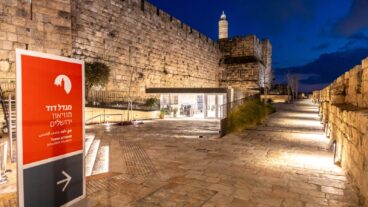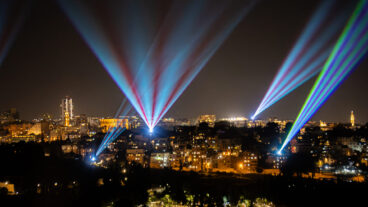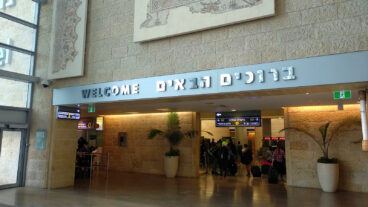Always a magnet for archeologists, Israel has seen its rich historical layers sifted through and catalogued exhaustively over the past 64 years of statehood. And there are always plenty more in progress, says Jon Seligman, head of excavations and surveys at the Israel Antiquities Authority.
The IAA supervises about 300 annual excavations, accounting for about 95 percent of all the archeological digs in Israel. The digs usually take place at a mound (tel in Hebrew) composed of the remains of ancient settlements. “We have 30 excavations every day,” says Seligman, “and we can carry on for many more years.”
Ten of Israel’s most significant archeological sites, now preserved as national parks and most of them UNESCO Heritage Sites, include:
1. Masada
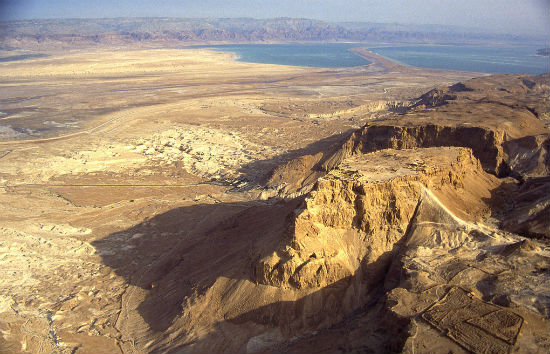
Herod the Great — the Roman client king who built the Second Temple in Jerusalem and the port of Caesarea — was also responsible for Masada, an ancient fortress overlooking the Dead Sea. Hiking paths and a cable car take visitors to the top of Israel’s most popular paid tourist site, and at the foot a nighttime sound and light show tells the story of a popular revolt against the Romans by a band of Jewish families here.
The Northern Palace, built on three rock terraces, included bedrooms with a semicircular balcony, colonnaded halls adorned with paintings, and a private bathhouse. A public bathhouse was excavated atop the plateau along with 29 huge storerooms, hundreds of clay pots, 12 gigantic cisterns, ritual baths and a stable-turned-synagogue (one of the earliest synagogues in the world).
Archeologists found skeletons and more than 5,000 coins, mostly minted during the five years of the rebellion, along with scroll fragments and more than 700 shards bearing inscriptions. On the plateau, site of the new Yigal Yadin Masada Museum, visitors will see hundreds of ballista balls that were fired at the fortress by Roman soldiers.
2. Megiddo
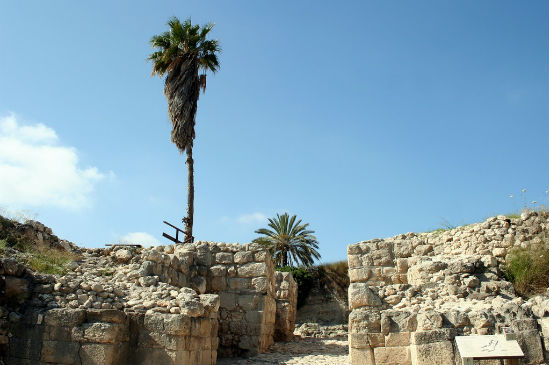
Located in the Lower Galilee on a critical ancient and modern crossroad, Megiddo reveals a long and bloody archeological picture of history. There’s good reason that Megiddo is identified with Armageddon, the scene of the battle of the End of Days according to Christian Scriptures.
Already a fortified city by the third millennium BCE, 1,000 years later it became a center of Egyptian rule over Canaan. King David then conquered Megiddo, and the city flourished under his son Solomon, who installed its first water system. The wicked King Ahab turned it into a chariot city before the Assyrians conquered it in 732 BCE. Many battles later, the city was abandoned after the Persian period.
The Megiddo Museum offers an audiovisual presentation and models of the site’s highlights, such as a Late Bronze Age gate (1500-1200 BCE), a palace, Solomon’s Gate, lookouts and stables.
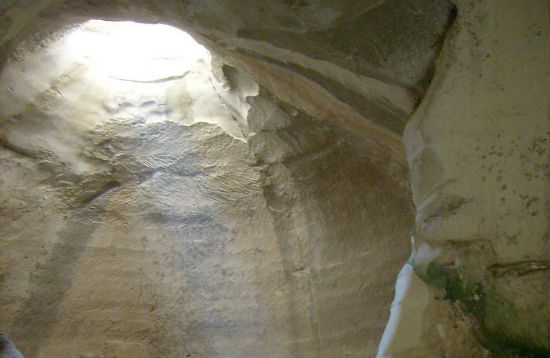
Known as “the land of a thousand caves,” Beit Guvrin-Maresha National Park encompasses approximately 1,250 acres of rolling hills in the Judean lowlands. Over thousands of years, people cut into the rock to make a huge network of bell-shaped quarries, burial caves, storerooms, industrial facilities, hideouts and dovecotes.
At a high point in the park is Tel Maresha, where the Bible records that King Rehoboam of Judah built cities for defense. It was abandoned during the Roman period, when the nearby city of Beit Guvrin was built and became an important locale of the Crusader era.
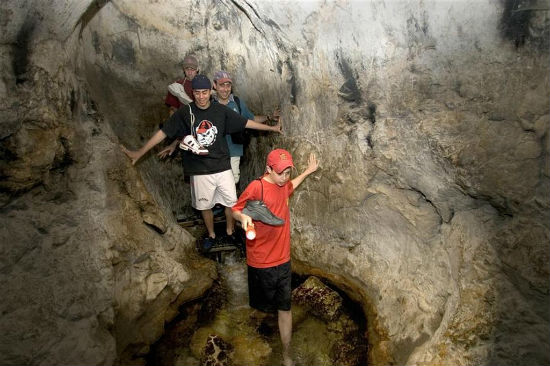
Dating back more than 3,000 years, when David conquered a narrow hill south of today’s Old City of Jerusalem, this area was once the Israelite capital and spiritual center. Surrounded by valleys, the city was fortified against attack with walls and towers. Taking advantage of the nearby Gihon Spring, the ancient builders made a sophisticated water system.
However, archeological finds such as potsherds show that the city was already inhabited more than 5,000 years ago, a small but significant walled city in the Middle Bronze Age at the time of the biblical Patriarchs.
The City of David affords great views of Mount Zion and the Temple Mount. Guides take visitors into the underground tunnels through which the city was conquered and residents fled, down into the hidden spring where kings were coroneted, and into the dark flowing waters of Hezekiah’s Tunnel.
5. Herodion
In 2007, archeologists finally discovered the remains of Herod the Great’s tomb here after 35 years of digging up all sorts of architectural and cultural treasures at Herodion (also called Herodium) in the Judean Desert.
Herodion was one of the largest royal sites in the Roman-Hellenist era, sometimes described as an ancient royal country club. It also served as a hideout for rebels during the Bar Kochba Revolt against Roman rule, and even as a Byzantine leper colony.
7. Ramat Rachel
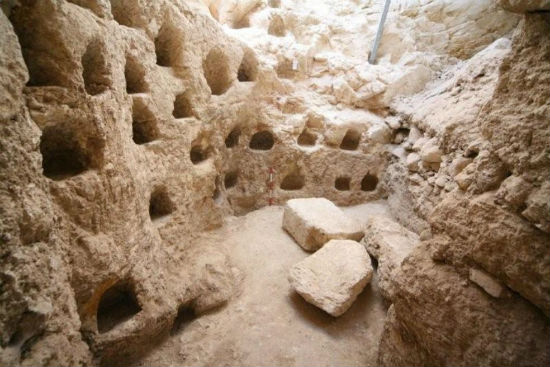
An ancient water reservoir was uncovered here in 2010 with the aid of a 250-ton crane to remove the five 10-ton rocks forming the collapsed top of the cave in which the water was stored.
Now a kibbutz and conference center on the southern outskirts of Jerusalem, Ramat Rachel was first settled in the days of the Judean monarchy (800-700 BCE). In turn, it was home to Persian, Hellenistic, Roman, Byzantine and early Islamic settlers, and then lay abandoned for about 1,000 years until Jewish pioneers rebuilt it in the 1930s.
A luxurious Assyrian palace, a Roman villa, a bathhouse, gold coins from the Second Temple period, a dovecote and a Byzantine church are among the finds here.
8. Tzippori
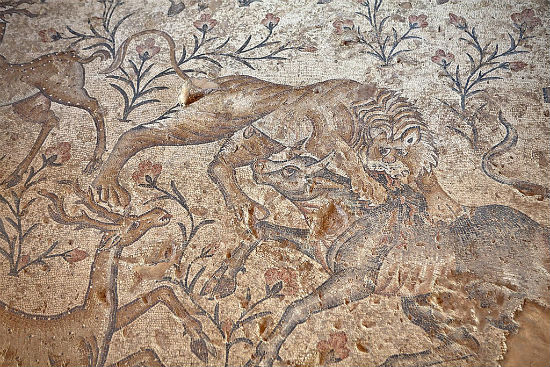
Tzippori (Sepphoris), the traditional birthplace of Mary, was an important scholarly city in the hills of Lower Galilee, west of Nazareth. Herod conquered it in 37 BCE, but 33 years later it was destroyed by the Romans following rebellions there. However, Herod Antipas restored it to become “the ornament of all Galilee,” and it served as the seat of the Sanhedrin (the Jewish high court) and a preferred residence for Talmudic sages until the mid-fourth century CE.
Archeologists have found evidence of a devastating earthquake around 363, but again the city was rebuilt and settled by an unusual mix of Christians and Jews in the fifth century. Remains of the Crusader church commemorating St. Ann can still be seen, as well as a Crusader fortress, rebuilt in the 18th century by the Bedouin ruler of the Galilee.
Visitors can explore a 4,500-seat Roman theater; a restored third-century villa in which a mosaic depicts scenes from the life of wine god Dionysus and the so-called “Mona Lisa of the Galilee”; a synagogue with a restored mosaic floor; and a 250-meter-long, first-century CE underground water system.
9. Beit She’an
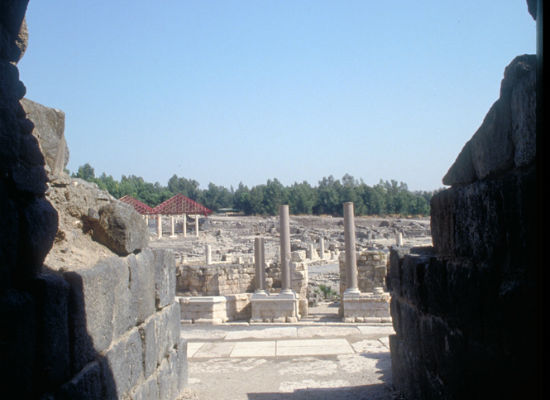
A nighttime sound-and-light show in this northern Jordan Valley site brings to life the history of Beit She’an, first settled about 5,000 years ago on a fertile mound. Like Megiddo to its west, it was once a center of Egyptian rule over Canaan, conquered by King David and later destroyed by the Assyrians.
At the time of Alexander the Great, Beit She’an became a Greek polis with colonnaded streets, temples, theaters, markets, fountains and bathhouses. Eventually, Jews, pagans and Samaritans lived together there, and grand public buildings went up. Early Christians built churches in Beit She’an, and a linen industry thrived there until an earthquake in 749 CE. It was resettled in the Middle Ages by Crusaders.
Archeologists have unearthed a 7,000-seat Roman theater, an amphitheater where gladiators fought, a Byzantine bathhouse and the main, colonnaded Paladius Street.
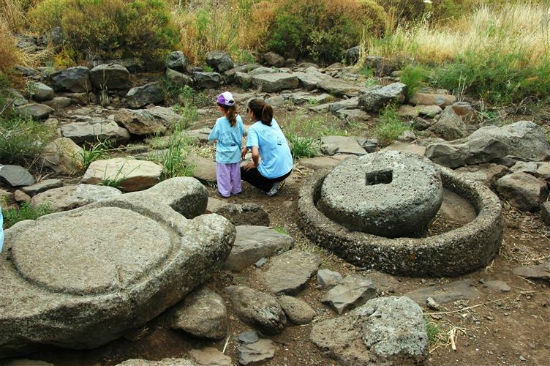
Situated in the central Golan Heights, Gamla combines nature and history: it is home to Israel’s highest waterfall, a unique number of raptors for its small size — including rare species and dozens of pairs of Griffon vultures — and one of the world’s most ancient synagogues.
On the way to the waterfall visitors can see “dolmens,” massive table-shaped stone burial monuments put up by nomads some 4,000 years ago. At the foot of a steep trail are the restored remains of the ancient city of Gamla, a prosperous Jewish town in the Second Temple period.
Unearthed ruins include a synagogue pre-dating the destruction of the Second Temple, an aqueduct, a ritual bath and arrows and ballista balls left behind by conquering Roman soldiers. A memorial in the reserve pays tribute to the Golan’s first settlers killed in Israel’s wars.








